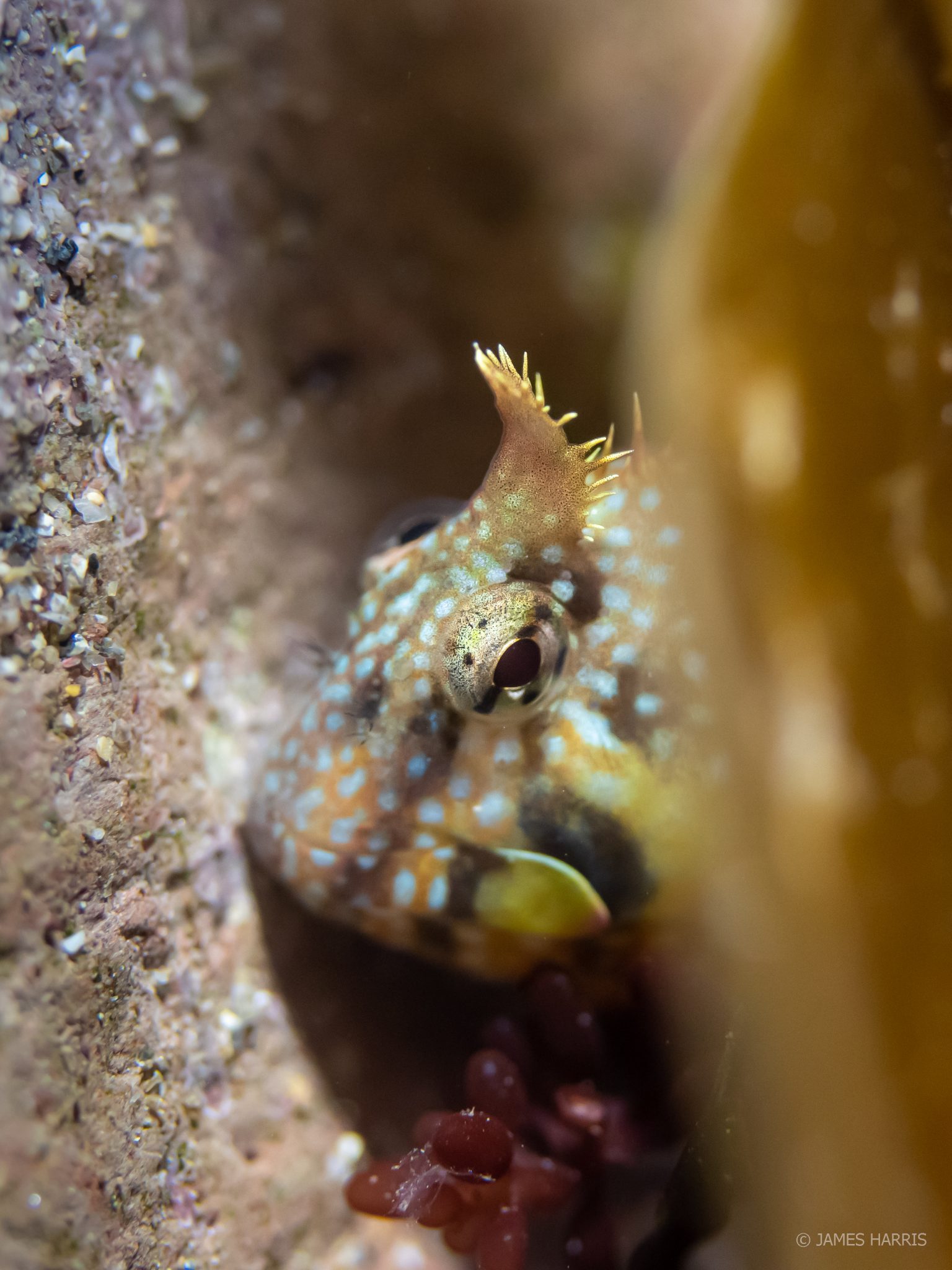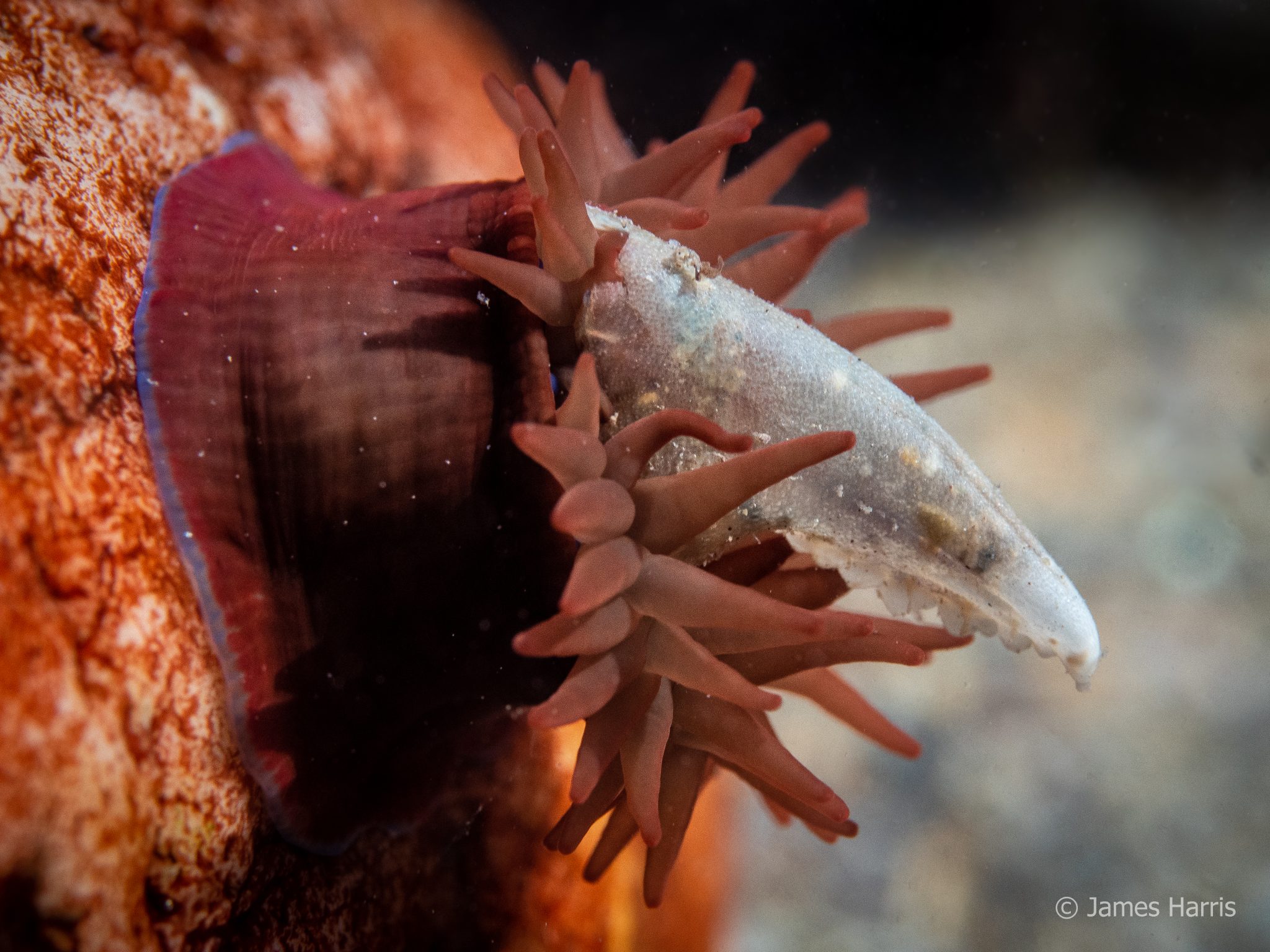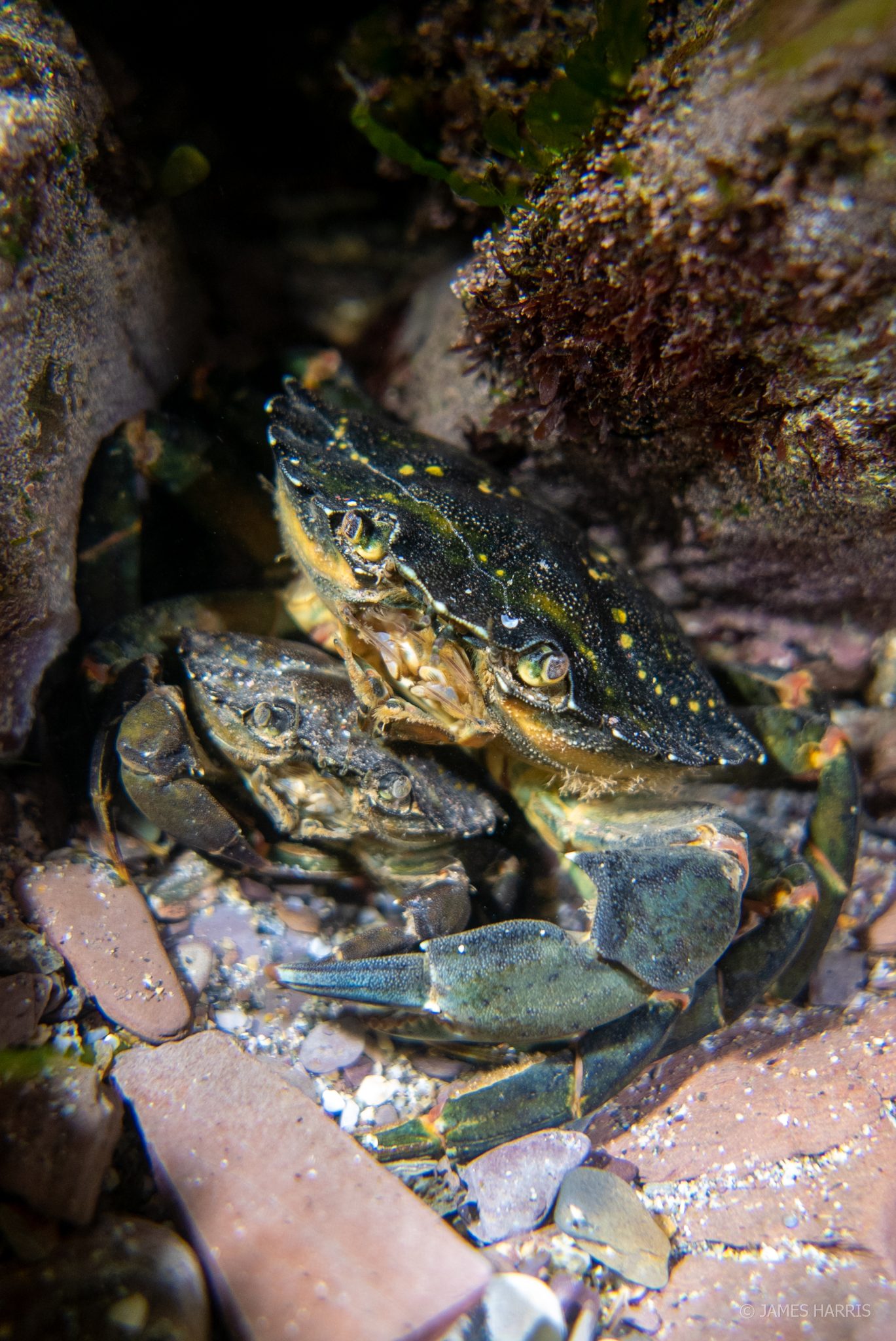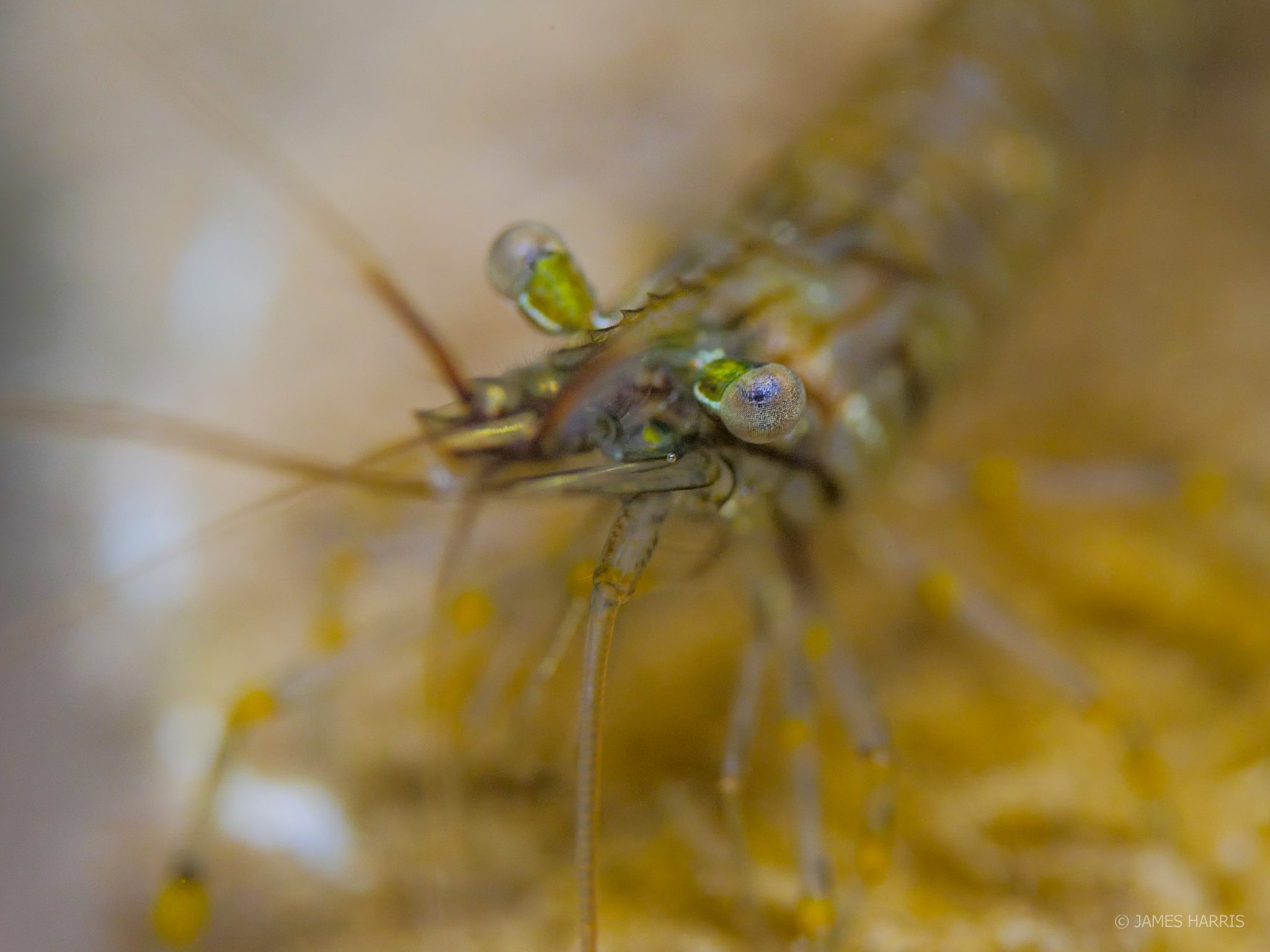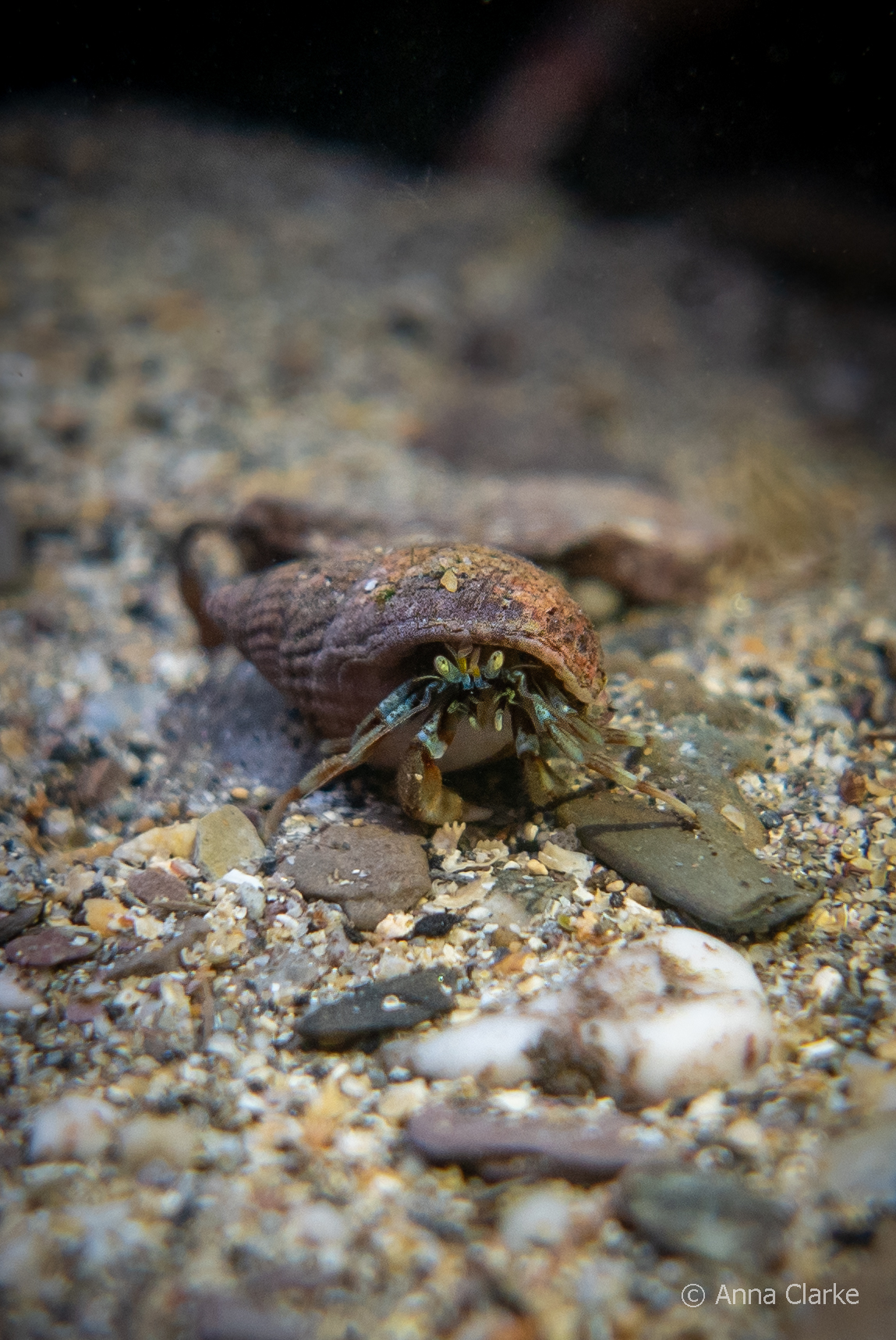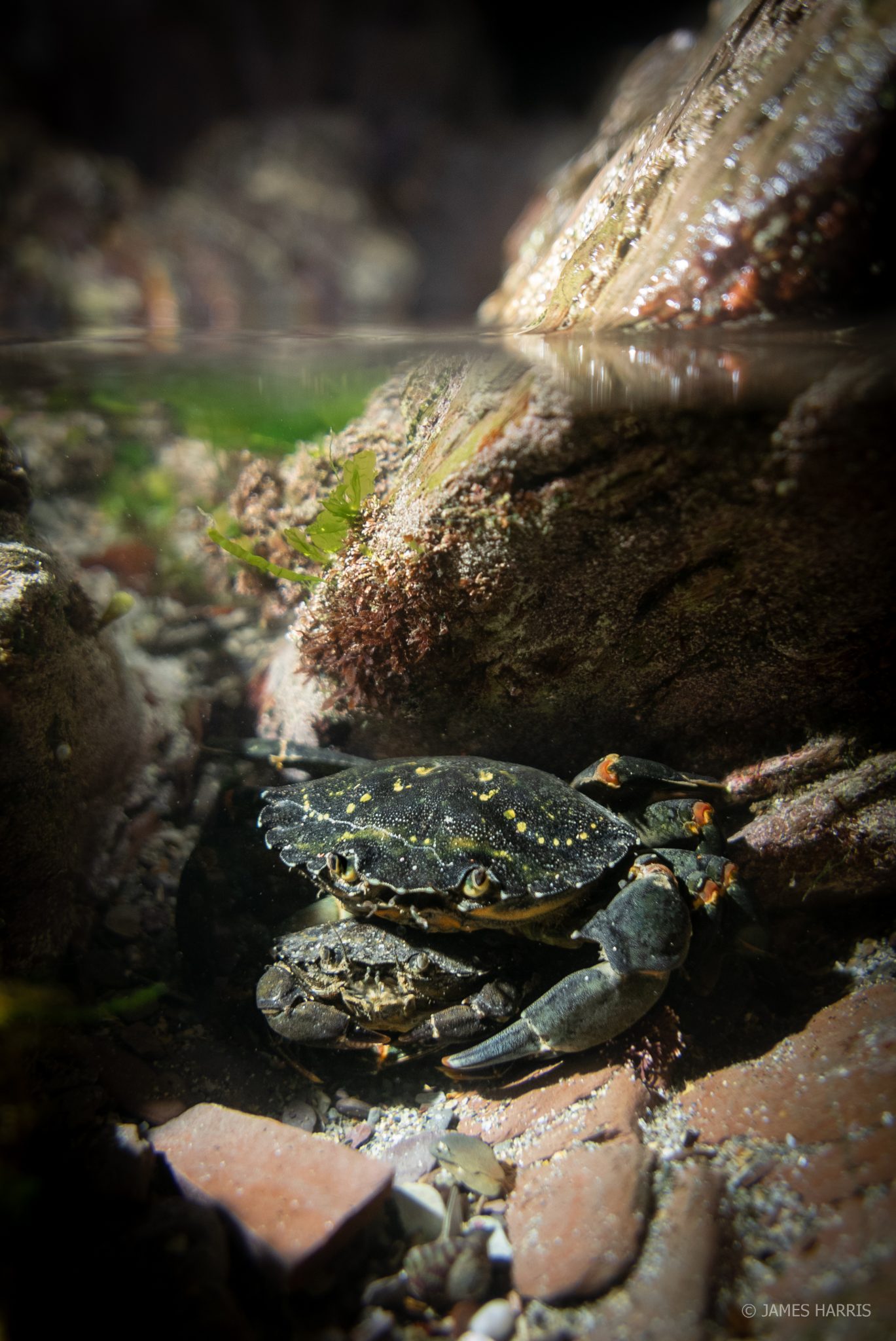News
Underwater photography – without getting wet!
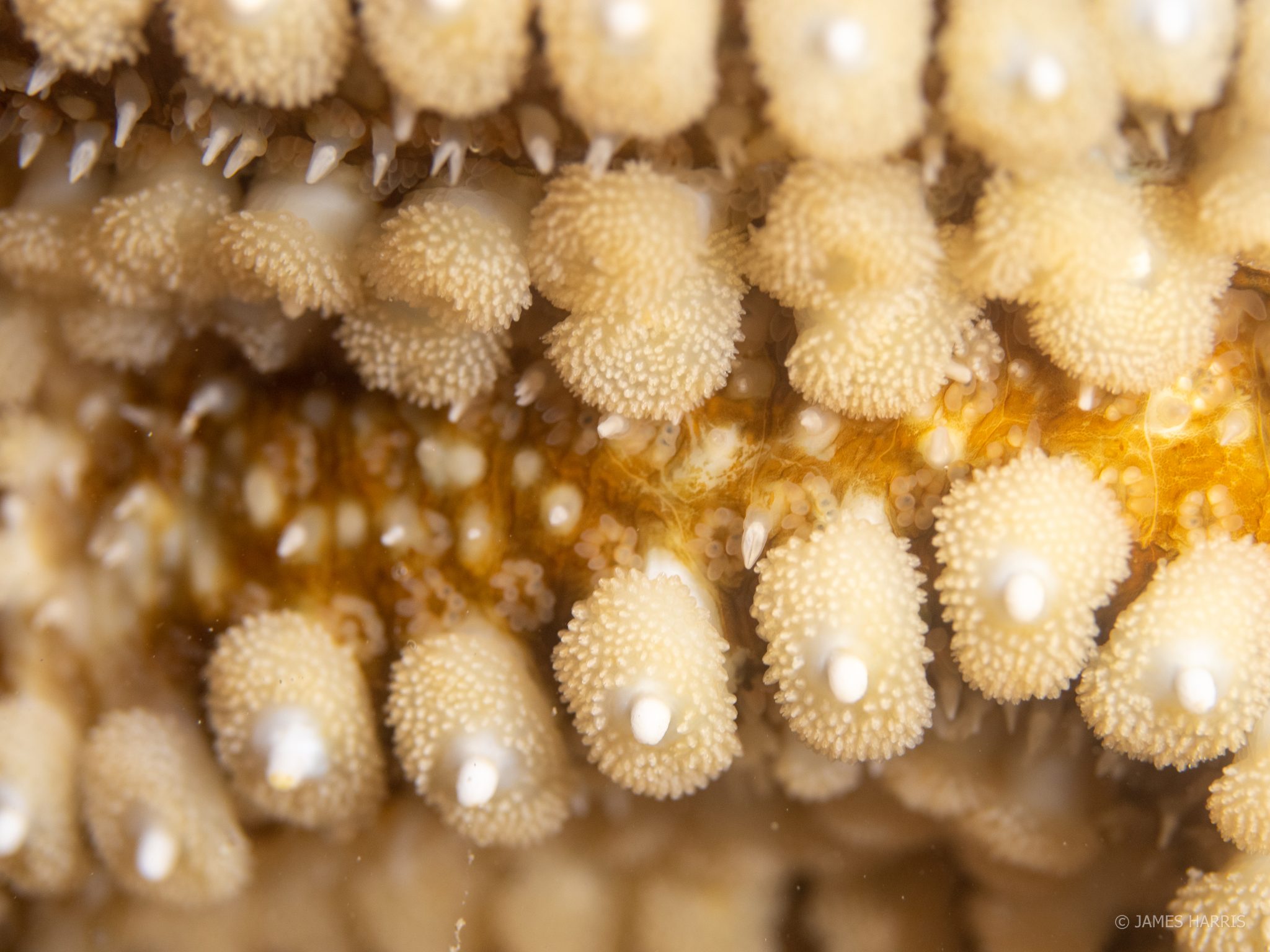
First of all, let’s address the elephant in the room. The image above. It’s a starfish, and those are its spines. OK great, now that that’s out of the way, let’s talk about an underwater (just about) photography idea you might not have considered before: rockpools!
If you’re a warm water diver who enjoys a bit of underwater photography, chances are your camera gear spends more time in storage than in the water. Even us hardy UK divers often leave the camera at home when diving our local site, there’s no denying it’s another thing to worry about.
This is where rockpool photography comes into play. Don’t get me wrong, this type of underwater photography certainly brings its own challenges. Swap buoyancy control for slippery footing, gas management for incoming tides, and a foggy mask for a hidden view finder. But here’s the thing; keep your battery charged and when the mood strikes, you can be out the house in 5 minutes, driving to the beach to take some underwater pictures. Rockpool photography enables one key thing, spontaneity. And when you can be spontaneous, your expensive underwater camera is much more likely to get used!
Macro
Get comfortable – rockpools are spiky! If you can bring yourself to embrace the fashion faux pas, gardening knee pads would be a blessing. Personally, I just can’t do it, so a rolled-up jumper has to do. Getting comfortable is particularly important when it comes to the first type of shot I’m going to talk about – macro. The Tompot Blenny above was in about 20cm of water which meant the viewfinder was totally submerged. I also had a tiny depth of field because of the macro lens I was using; look at the surface of the rock on the left to see the focus go in and out. Put these things together and you can guess how many shots it took to get that front eye and head fringe sharp.
Macro in rockpools is great, it allows you to bring to life the overlooked critters hiding right under our noses. It definitely takes some time and patience though and getting comfortable makes the experience much more enjoyable.
When you think there’s nothing to see, keep looking. At first glance, most rockpools look fairly uninteresting. But in a similar way to when you look at the night sky and the stars gradually reveal themselves, the more time you spend looking in a rockpool, the more you will notice.
This Beadlet Anemone, a pretty common sight in UK rockpools, happened to be dealing with a stray claw that had recently been shed by a moulting crab. I didn’t even notice there was something unusual until I was lining up the shot, and it wasn’t until I got home and zoomed in that I realised exactly what it was.
There is more going on in most rockpools than you might think. It’s quite a departure from open water diving where you have space to take everything in, but I promise – keep looking, it’s worth it!
Capture behaviour. You can be forgiven for assuming that rockpools are quite static. They are just full of creatures waiting for a high enough tide to get back to the sea, right? Not necessarily. When I crouched down to take the shot above, I thought there was only one crab. To my surprise, I noticed that there were actually two! The larger of the pair was carrying a smaller crab underneath it, chasing away other critters as it went.
After researching the behaviour, I discovered the two crabs were in a mating embrace. When this happens, a male crab carries a female away from other males where he will guard her for up to six days. During this time, she moults her hard shell (now I think about it – perhaps it was her claw I found in the anemone above?!) in preparation to mate, leaving her vulnerable. Throughout this time, she is totally reliant on him for protection.
Observing behaviour as it unfolds and capturing it with your camera makes you feel connected to rockpools in a more meaningful way than you might be used to. Next time you’re out, watch out for interactions between creatures, you might be surprised how dynamic these habitats are!
Don’t wait for something amazing. If there’s one thing that you are almost guaranteed to see in rockpools, it’s prawns. They are generally semi-translucent, small, and not particularly interesting. But when you get very close, all sorts of colours, textures and intricate physiological features are unveiled.
The Rockpool Prawn above was only about 1.5cm in length and I only really bothered photographing it to practice with my macro lens. It wasn’t until I got home that I noticed the fascinating blue silver detail in the eyes, similar to a fly. Spiky ridges along its back, bright yellow bands and colourful green eye stems were also revealed under the scrutiny of the macro lens
This silly little creature that I generally ignored, was turning into something far more interesting. Don’t wait for something amazing, get shooting because you might be surprised how amazing the mundane is when given some close attention.
Give it a go! The image above was taken during a trip to Wembury Beach by my partner and it was her first time trying underwater photography. She was using a ten-year-old camera and managed to capture a picture as good as any I took.
This shot has such good composition and beautifully captures a moment in time. By getting down low and facing the Hermit Crab head-on, it looks like it’s posing for a portrait. The sprinkle of sand on the top of the shell and the vibrant blue colouring on the legs are the icing on the cake. I love this picture and it’s proof that you don’t have to be a pro to take a great shot. Get out there and give it a go!
Wide-angle & under/over
Put things into context. If you don’t have the equipment/eyesight for macro photography and aren’t sure how your wide-angle setup can be used in a rockpool full of tiny creatures, keep reading.
You might recognise the two Shore Crabs above from an earlier image. That earlier picture was taken using a macro lens whereas this one was an under/over image using a wide-angle lens. Wide-angle is great for this type of shot. The larger dome gives you more glass to position the water line where you want it, allowing you to capture both over and underwater worlds in one shot.
I find this type of picture great for giving some context to your images. They aren’t just random underwater scenes; they are moments in a recognisable environment.
Animals are optional. Now, despite me saying how many hidden creatures will reveal themselves if you look for long enough, those of you with a patience deficiency have another option. Rockpool landscapes are incredible varied and fascinating, particularly if you use a wide-angle lens to capture under/over pictures.
The collage above is a collection of rockpool landscapes I took one evening at Wembury Beach. You can see how different the textures and colours between rock pools within metres of each other can be. From the surface, they look fairly similar, but capturing them in this way allows you to showcase the diversity that’s hidden beneath the water’s surface.
A final thought
If you’re anything like me, one word comes to mind when you imagine taking your underwater camera into a slippery rockpool – awkward. To a certain extent it is, and honestly, it takes a bit of getting used to, but compared to scuba diving, rockpool photography is so convenient. It’s easy to dismiss, but stick with it, stay patient, follow some of the tips above, and you’ll be surprised what you can find just under the water’s surface. Get out there and give it a go and don’t forget to tag me if you post anything online, I’d love to see it!
Blogs
The Ocean Cleanup Breaks 10,000,000 KG Barrier

The Ocean Cleanup, the global non-profit project, has removed a verified all-time total of ten million kilograms (22 million lbs.) of trash from oceans and rivers around the world – approximately the same weight as the Eiffel Tower.
To complete its mission of ridding the oceans of plastic, The Ocean Cleanup uses a dual strategy: cleaning up the Great Pacific Garbage Patch (GPGP) to remove the plastic already afloat in the oceans, while stopping the flow of plastic from the world’s most polluting rivers.
Through cleaning operations in the GPGP and in rivers in eight countries, the cumulative total of trash removed has now surpassed ten million kilograms. This milestone demonstrates the acceleration of The Ocean Cleanup’s impact, while underlining the astonishing scale of the plastic pollution problem and the need for continued support and action.
While encouraging for the mission, this milestone is only a staging point: millions more tons of plastic still pollute our oceans and The Ocean Cleanup intends to continue learning, improving and innovating to solve this global catastrophe.
This announcement comes as governments from around the world meet to continue negotiations to develop a new legally binding instrument to end plastic pollution at INC4 in Ottawa, Canada. Representatives of The Ocean Cleanup will be in attendance and the organization will be urging decision-makers to collaborate towards a comprehensive and ambitious global treaty which addresses plastic at all stages of its life cycle and in all marine environments worldwide, including in areas beyond national jurisdiction.
It is encouraging to see that the need for remediation is reflected in the various options for potential treaty provisions. It is essential that the final treaty contains clear targets for the remediation of legacy plastic pollution, and reduction of riverine plastic emissions.
Tackling plastic pollution requires innovative and impactful solutions. The treaty should therefore incentivize the innovation ecosystem by fostering innovations that make maximal use of data, technology and scientific knowledge – such as those designed and deployed by The Ocean Cleanup.
‘After many tough years of trial and error, it’s amazing to see our work is starting to pay off – and I am proud of the team who has brought us to this point.’ said Boyan Slat, Founder and CEO of The Ocean Cleanup. ‘While we still have a long way to go, our recent successes fill us with renewed confidence that the oceans can be cleaned.’
The Ocean Cleanup was founded in 2013 and captured its first plastic in 2019, with the first confirmed catch in the GPGP coming soon after the deployment of Interceptor 001 in Jakarta, Indonesia. After surpassing one million kilograms of trash removed in early 2022, the non-profit project has since progressed to the third iteration of its GPGP cleaning solution, known as System 03, and a network of Interceptors currently covering rivers in eight countries, with more deployments set for 2024.
About The Ocean Cleanup
The Ocean Cleanup is an international non-profit organization that develops and scales technologies to rid the world’s oceans of plastic. They aim to achieve this goal through a dual strategy: stemming the inflow via rivers and cleaning up the legacy plastic that has already accumulated in the ocean. For the latter, The Ocean Cleanup develops large-scale systems to efficiently concentrate the plastic for periodic removal. This plastic is tracked and traced through DNV’s chain of custody model to certify claims of origin when recycling it into new products. To curb the tide via rivers, The Ocean Cleanup has developed Interceptor™ solutions to halt and extract riverine plastic before it reaches the ocean. Founded in 2013 by Boyan Slat, The Ocean Cleanup now employs a broadly multi-disciplined team of approximately 140. The foundation is headquartered in Rotterdam, the Netherlands.
For more information, visit: theoceancleanup.com and follow @theoceancleanup on social media.
Marine Life & Conservation
Steve Backshall to headline Shark Trust’s flagship event: For the Love of Sharks

Join a host of amazing, shark loving, speakers including Steve Backshall and the Shark Trust team for an evening celebrating shark conservation at the Royal Geographical Society in London this November.
Date: 29th November 2024
Time: 6-10pm
Location: Royal Geographical Society, London
Tickets: https://www.sharktrust.org/Event/flos24
The event will be a celebration of all things shark. Those lucky enough to get hold of tickets will hear from engaging guest speakers with a passion for sharks.
The line-up includes (*subject to change if unforeseen circumstances arise)
Steve Backshall: One of television’s busiest presenters, BAFTA award-winning wildlife expert Steve has been passionate about the wild world ever since he was young.
Steve’s impressive TV career has taken him all around the world, investigating a wide array of species and environments. Steve has filmed over 100 hours of children’s wildlife programmes with the BAFTA award winning Deadly 60 franchise and recently, with Sky Nature, for his new series ‘Whale with Steve Backshall’. He has been a patron for the Shark Trust for 10 years.
Simon Rogerson: is a photojournalist specialising in natural history, diving and the sea.
He is editor of SCUBA magazine, the official journal of the British Sub-Aqua Club. Simon started his career as a crime reporter but gravitated towards his ‘less depressing’ interest in underwater exploration, joining the staff of DIVE magazine in 1999. In 2005 he was named ‘Editor of the Year’ in the PPA’s Independent Publishing Awards. Simon also works as a freelance writer, contributing frequently to the Sunday Times and Telegraph, in addition to BBC Wildlife, Esquire, and a host of international diving magazines. He is the author of a book, Dive Red Sea, published by Ultimate Sports. Now based in Berkshire, Simon has been a Patron of the Shark Trust for 20 years.
More speakers to be announced soon. Head to the Shark Trust website to learn more.
The evening will also allow guests the final chance to see the Oceanic 31, shark art exhibition. Some of the artwork will be auctioned/raffled at the event, while the rest will be auctioned online to raise money for the Shark Trust Oceanic Programme.
For the Love of Sharks is an evening with something for everyone who is interested and fascinated by sharks. Join the Shark Trust, their Patrons, Trustees and Staff, along with a host of supporters for this celebration of shark conservation.
For more information or to buy a ticket: https://www.sharktrust.org/Event/flos24
-

 News3 months ago
News3 months agoHone your underwater photography skills with Alphamarine Photography at Red Sea Diving Safari in March
-

 News3 months ago
News3 months agoCapturing Critters in Lembeh Underwater Photography Workshop 2024: Event Roundup
-

 Marine Life & Conservation Blogs3 months ago
Marine Life & Conservation Blogs3 months agoCreature Feature: Swell Sharks
-

 Blogs2 months ago
Blogs2 months agoMurex Resorts: Passport to Paradise!
-

 Blogs2 months ago
Blogs2 months agoDiver Discovering Whale Skeletons Beneath Ice Judged World’s Best Underwater Photograph
-

 Gear Reviews3 weeks ago
Gear Reviews3 weeks agoGEAR REVIEW – Revolutionising Diving Comfort: The Sharkskin T2 Chillproof Suit
-

 Gear Reviews3 months ago
Gear Reviews3 months agoGear Review: Oceanic+ Dive Housing for iPhone
-

 Marine Life & Conservation2 months ago
Marine Life & Conservation2 months agoSave the Manatee Club launches brand new webcams at Silver Springs State Park, Florida


